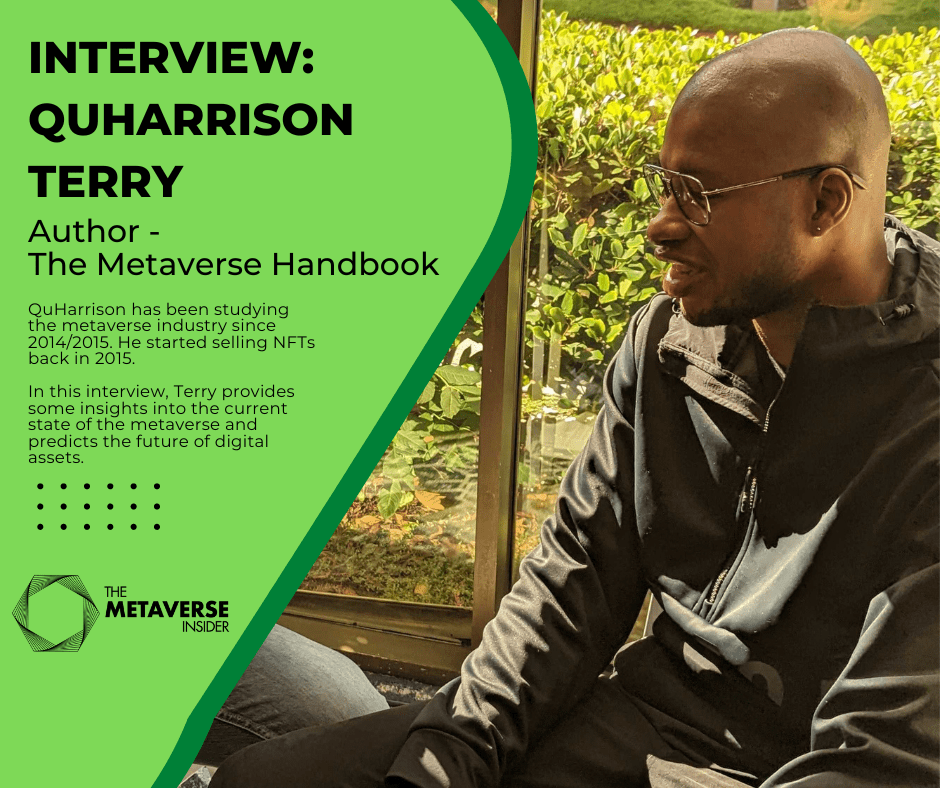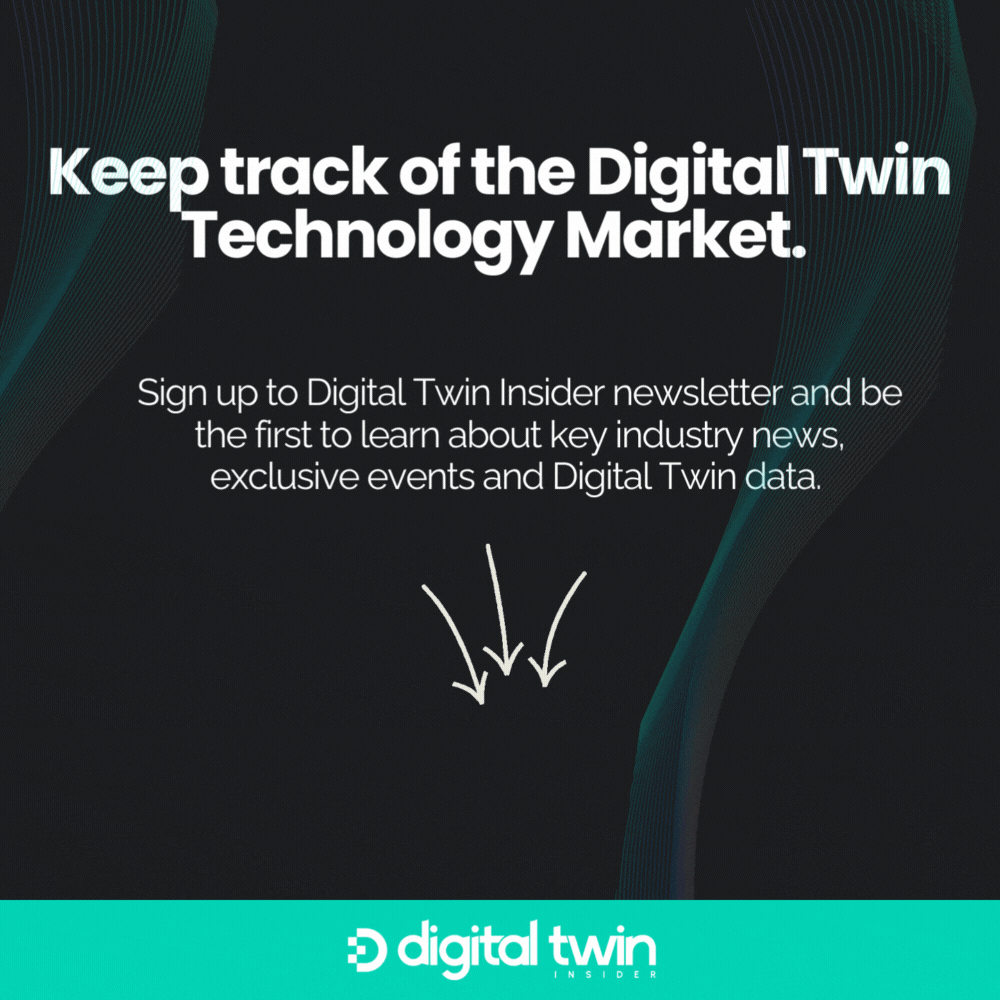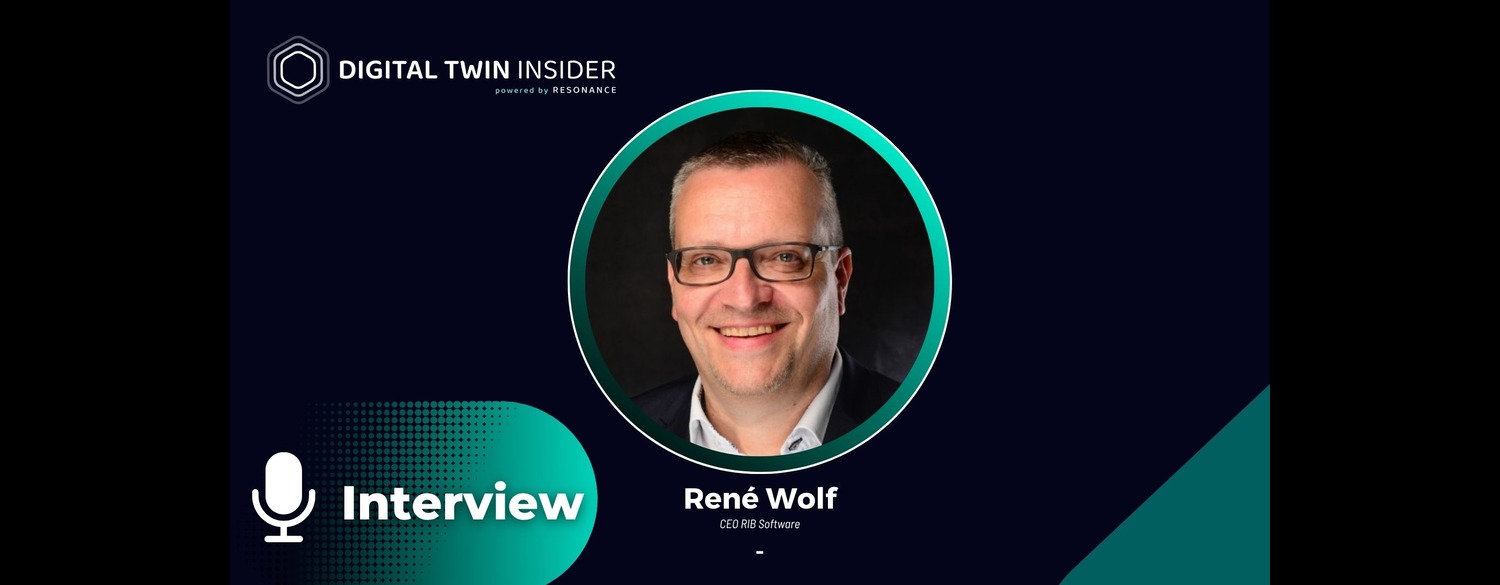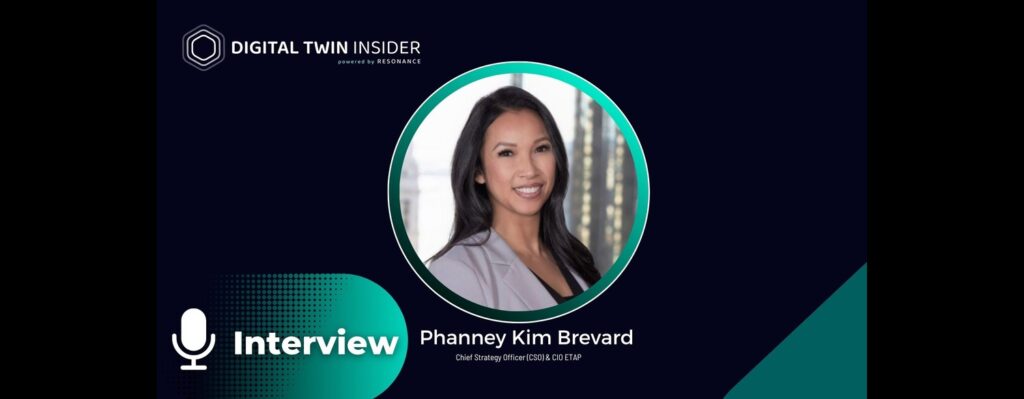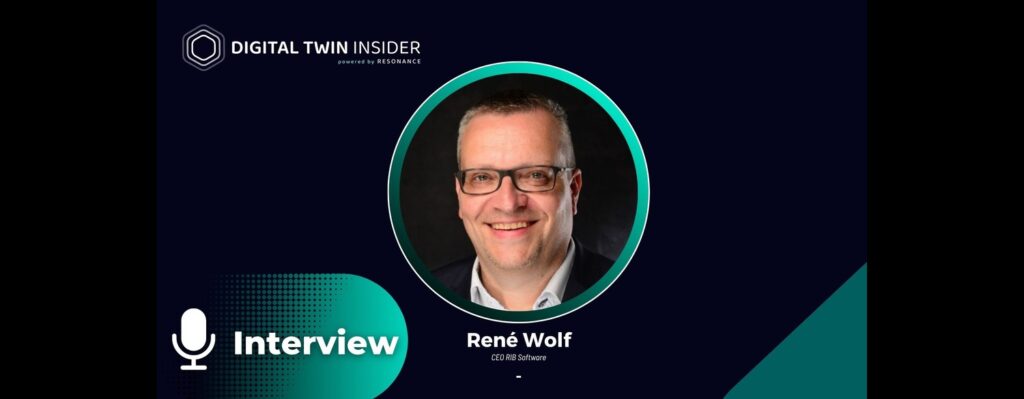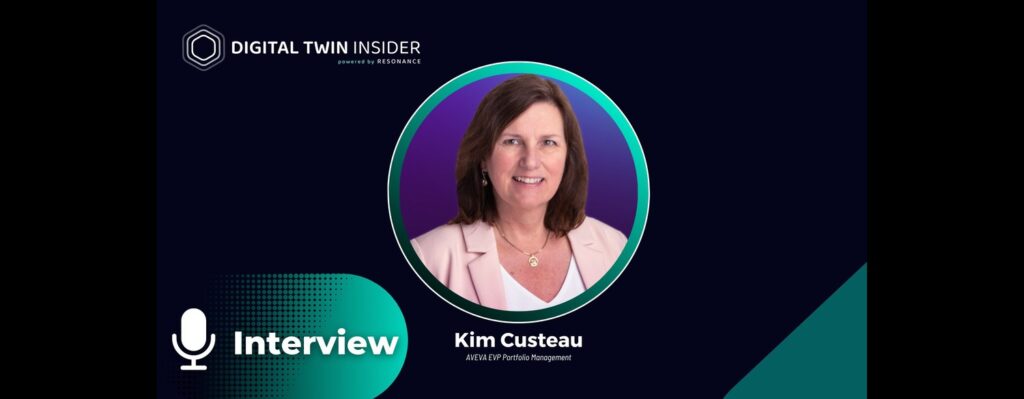Metaverse Insider had the chance to set up a booth at the Economist Summit by Economist Impact last week in San Jose. At the conference, we had a booth where we had an opportunity to meet with many influential minds in the emerging metaverse space.
At the Summit, we had the opportunity to chat with QuHarrison Terry. QuHarrison has been involved in the metaverse and NFT space since 2015. He often writes about the metaverse space and has amassed a following of over 300,000 on LinkedIn. Recently, Harrison published The Metaverse Handbook; Innovating for the Internet’s Next Tectonic Shift. Here’s our conversation in San Jose, where we discuss digital assets’ current state, the metaverse, and where the industry is heading.

I started off by asking QuHarrison how he got involved in the metaverse space and what led him to develop an interest in this industry.
“I’ve always been into digital assets. I started selling NFTs back in 2015. We started 23VIVI, me and my co-founder were utilizing the Bitcoin Blockchain to protect digital assets then. So having just that much experience with thinking about digital scarcity and how digital items could add value, quite frankly, the question that you’re always going to run into inevitably, is where do I showcase these set assets?”
“What we saw a lot of people doing was taking things out of the digital world and bringing them into the physical world. Many of the popular NFT projects that you see today, it’s like, you have a really cool Bored Ape, you’re gonna take it and put it on a Pepsi can (or) you’re gonna take it and you’re gonna put it on some socks or you put it on a billboard in Times Square. None of these things are inherently digital, yet the product that you’re transacting is a digital good. That really got me excited.”
I started looking at the metaverse back in 2014/2015. The metaverse was Oculus DK kits; DK 1, DK 2. I thought that was the coolest thing ever. But you know, even at that point, they were using a bmini DisplayPort. Like, it wasn’t even an HDMI port. To have like the best computer to run that, especially in any form or fashion that wasn’t like this big desktop PC, if you wanted any type of sleekness that you’d get with a MacBook, you needed a pretty powerful laptop. And so I had some experiences with a thing. But when the standalone stuff came out, I was really excited and just dabbled with the Oculus platform and also the Vive platform. That was like where I started!”
“The metaverse is not just VR, it’s also XR in general. But for me, I can start with VR, but all the things that will come into life in VR might also manifest themselves in AI. This stuff (in 2016/2017) was like really exciting. like Pokemon Go was like the biggest app! We have to realize that it’s gonna take probably a decade or more to really see this stuff coming to fruition in the ways that we as visionaries, and innovators are talking about it today.”
It’s interesting to meet people who started understanding and learning about this space in 2015 – 2017. QuHarrison painted an exciting picture of what the VR headsets and NFT market were like in the early stages. I proceeded to ask QuHarrison what he thought about the current VR headset market, especially the new Meta Quest Pro released around our interview.
“The standalone stuff, I think it’s okay, it’s clunky. It doesn’t fit your face. It’s not custom! Like, we’re still in the era of like car phones. The phone is portable, but it’s in your car. This was a cumbersome experience. This is not even the candy bar cell phone. There is a certain uniqueness that is had when you think about where this could go, or how this will manifest and how it’s shaped. I think right now, we have to get over the fact that this is not going to happen tomorrow. The thing about the Carphone is, when it existed, you had to figure out how do you get a telephone, telephone service or cellular communications to a car that’s moving. The first infrastructure of sorts for wireless comms would go on to have an unprecedented impact in all of our lives. And that’s something that started way before we even started to think about smartphones.”

QuHarrison’s analogy of using how smartphones evolved was interesting. Using this analogy made me realize how early in the process we are of building out an ideal XR headset.
Next, I asked QuHarrison about his take on NFTs. He has been involved in the digital assets space for a long time so I wanted to get to know his point of view on the current bear market and how the market will evolve.
“I think it’s here to stay. It’s I think that there was a hype cycle and the whole buzzword of the term ‘NFT.’ But now that we’ve gone past the hype cycle, we’re in a bear market of sorts, and the builders get to focus on what they do. And that’s building!”
“I think the fact that the NFT exists today allows for different accessibility and portability around the whole standard of scarcity and security. For the first time ever, you can create something digitally that can have value, and there’s nothing I can do to take that value away. I can’t copy and paste and say I have the edition! If you’re an artist, you can protect your work. Then because of smart contracts, there are things that are coming to fruition, like royalties that are immutable. They are always enforceable! Polygon is working on a standard that allows for that to happen. And so, when you see the innovation that has transpired in the last three years, it’s kind of hard not to acknowledge it.”
I think the biggest misconception people have about NFTs is that you have to talk about an NFT as an NFT. When your favourite artists drops a song, do you think of mp3? When your job offers you a promotion, do you think PDF? Like, it’s like the file format we have to get around.”
“One of the things that I always think about not in that regard is like, when digital cameras first went mainstream about 20-something years ago, the greatest ad or marketing asset that people would say you should buy a digital camera was so you could print your own photos at home. That was literally what the marketing spoke and like what the brand positioning was for the digital camera. The digital camera opened a pathway to take a photo and post it to Instagram! All of those infrastructure things had to be developed and built before the utility beyond just I took a digital photo. It exists on my computer because it exists on my computer, I can print it on my home at-home printer. That was a very lame use case of the digital photo.”
I agreed with QuHarrison’s point of view that the use cases of these digital assets will be much more than just owning an NFT. The use cases will evolve over time as technology develops. Thus, I asked him if he could come up with some other use cases of NFTs.
“I bought Real Estate as an NFT. Because of the NFT’s smart contract. The token represents a part of a bigger contract that’s attached to a trust. And that trust mandates whoever owns this token.”
It was interesting to learn that QuHarrison has not only understood other use cases of a smart contract but has taken advantage of it as well to buy real estate.
I proceeded to ask QuHarrison if he thought whether blockchain and DeFi will be a part of the metaverse.
“I think there’ll be two metaverses. You’re gonna have centralized metaverses and decentralized metaverses. In the same way, we have video games. There’s open source video games, and then there’s, there are closed-platform video games. When you look at GTA 5, there are a lot of elements of it that are open source. Like people go in, they make their own servers, they do their own mods.”
“Even though they’ve (Rockstar Games) been hacked, and a lot of stuff has been released. They still are a proprietary platform. And they are proprietary, and they have some information that isn’t generally public. But for the most part, if you want to go and develop in the GTA environment, you can, and other people can experience it. So, for this example, I’ll call that an open-source community!”
“On the flip side, you look at Fortnite, it’s a closed platform. If you want to do something in that in that world or environment, you’ve got to work with Epic Games. You’ve got to let them make it for you. And it’s a partnership, but it’s closed! Everything is on their servers; everything is run through their standards to their desires. And there’s nothing wrong with that! It’s just that there’s many ways to get to this Metaverse that we all want to see.”
I think the decentralized nature, by many regards, is much harder. Because some of the things that we know and love about most platforms just don’t exist yet in a decentralized fashion.”
QuHarrison provided some great insights about the metaverse and digital assets market. He’s written books on both topics so I ended my interview by asking him about his books and what made him write them.
“I had written the NFT handbook a year prior. And in chapter 9 of the NFT handbook, I had talked about the future of NFTs, and I touched on the metaverse! A lot of people kept asking me about the metaverse and my thoughts about it. So, I thought it was only the right thing to do was to, you know, share all those thoughts in the metaverse!”
QuHarrison provided some great insights about the metaverse and the NFT market. Metaverse Insider would like to thank QuHarrison for taking the time out to speak to us during a very busy Metaverse Conference in San Jose, where he was a speaker as well.
For more market insights, check out our latest Digital Twin news here.
